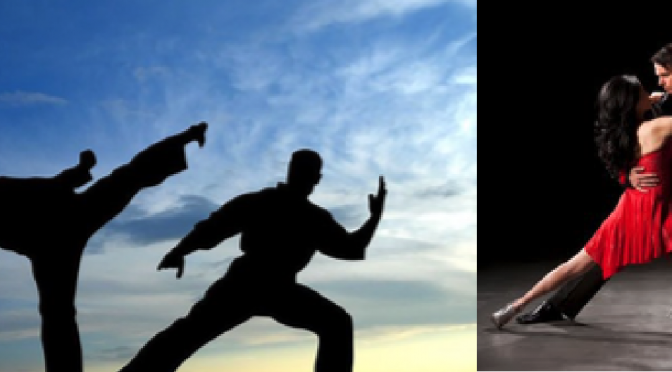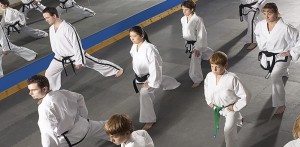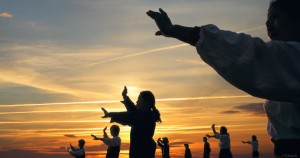There are so many things about Tango that seem to me to align so strongly with asian martial arts and philosophies.
If it was possible to categorise and analyse them – of course in itself a western approach – I would think about :
The emphasis on technique
Both martial arts and tango strongly emphasise technique, the purest way to perform the simplest of moves. Technique underpins everything.
The repetition of the basic gestures
In both fields students endlessly repeat the most basic elements as good technique is a fundamental requirement for any level of proficiency. A punch – a pivot. A kick, a step. Weight, balance, rotation and energy.
The learning of figures and patterns – even though we should not use them
Katas, figures, moves – the early ones give us a vocabulary as a beginner, the more advanced ones stretch us as intermediates and then for when it matters – a conflict or a dance that we care about – we must abandon them. Figures allow us to practise combinations of elements, and then we turn to true improvisation when we are using our skills for the moments that we have been putting all those hours.
The role of the guru
Something so complex needs teachers, and as we progress – a guru.
I like this definition from urban dictionary .. of a guru .. –
a teacher and especially intellectual guide in matters of fundamental concern
.. an intellectual guide – so yes – we have at the beginning teachers who can help us with physical matters and technique but as we become more accomplished we need intellectual – and even spiritual – guidance in these disciplines – the mind is what is important.
The philosophical acceptance that this is a complex subject
In both disciplines students have the sense that this is an endless subject – something that they can never truly master. This is part of the appeal – that it will always ask and offer more.
The connection to the floor and to the heavens
So often we here of the importance of the floor in Tango, and that we should in some way be down from the hips and lift up above them. We push from the floor and we reach for the sky – the same teachings of Tai Chi could quite literally be applied to Tango – this extract is actually describing Tai Chi but what student of Tango would not agree :
Be heavy and rooted on the bottom, light and supple on top. Don’t move the arms separately form the body, move as one unit, flowing and uninterrupted….No hollows or protrusions, weight down form the coccyx and up from the top of the head.
The concept of journey for the student
Tango is indeed a journey – so many times the answer to a question is – “it depends where you are on your journey”
Here – again – is a description of Tai Chi
—Tai Chi is process, the point of it is the evolution of the practitioner, not the acquisition of the art.
Softness and technicque generates power and strength
One of the greatest parallels for me – where I am as a student in my Tango journey – is that it is so easy for the student to use far more force than necessary. With correct technique, a lack of tension, good grounding and practised balance so much can be achieved with so little external force.
Something to Learn?
Actually there is a difference in the way we study. In the majority of martial arts – not all – the group will indeed practise the fundamentals of for example one punch, or one kick – as individuals within the group. Later in the class patterns, or katas – will be worked on.
But in the average tango class the first part of the class does not have students repeating the basic moves such as steps and pivots – with a teacher to copy. I have only experienced this with Joao Alves in Seville – where every single class, whatever level, starts with this approach – walking as a group up and down in front of the mirror – with him – perfecting balance and single movements such as a pivot in isolation.
An alternative approach that also works very well is that used by a wonderful teacher whose classes I attend every week in London – in his advanced classes he will indeed start with a figure and extend it – but he repeatedly stresses that the figure is irrelevant as it is choreography only – what matters is what we learn by analysing it and breaking it down.
Instead most normal tango classes immediately work on a figure, or set of figures – that form the choreography of the day. There are many, many classes I have attended where success is measured by the students ‘getting the figure’ with no emphasis or explanation on the purity of the movements and the techniques within it.
This is understandable – teachers need students to feel they are making progress and the accumulation of patterns assists with this learning process – but with this kind of teaching and preoccupation with figures in my view the student’s ability to dance Tango in a pure way, centred and relaxed within themselves and the music is impaired.
This to me is quite a fundamental difference is the way that students learn these two subjects. Imagine the chaos if in martial arts classes beginners were asked to spend most of the class fighting each other. Yet that is exactly what we ask beginners at Tango to do – dance with others when it is obvious that neither know how to do so.



